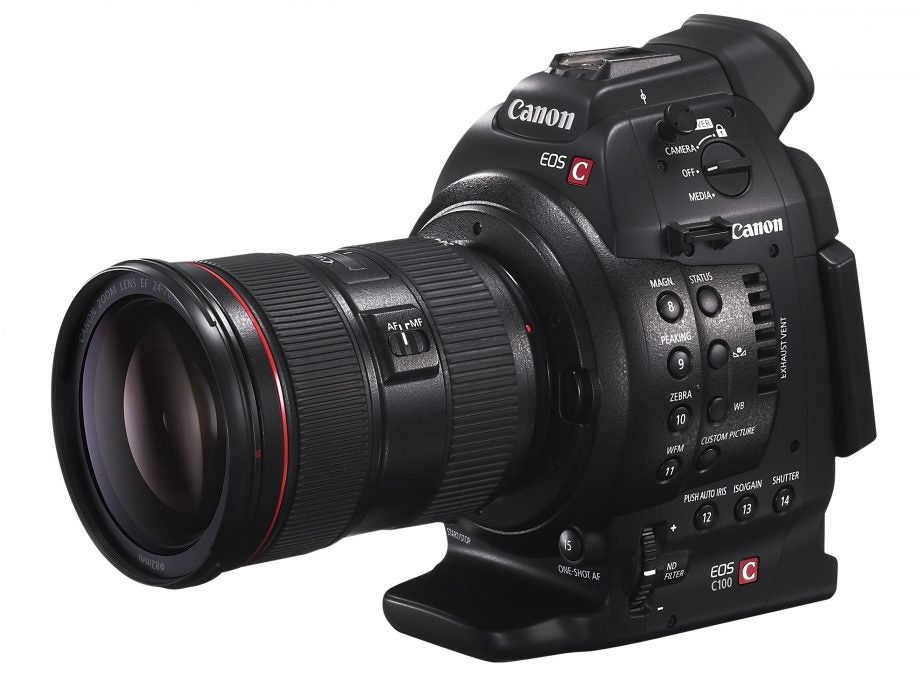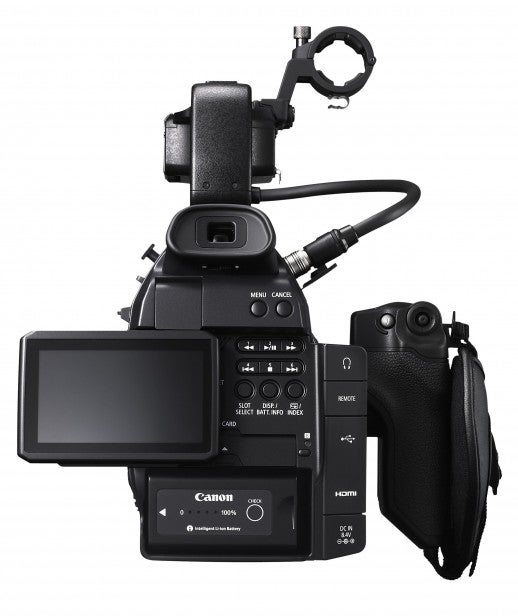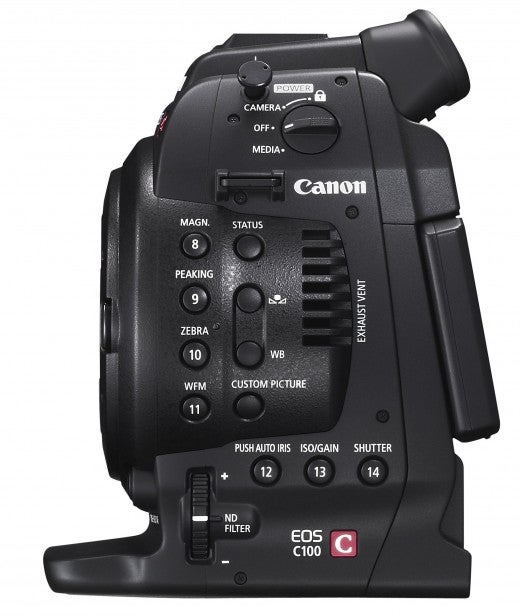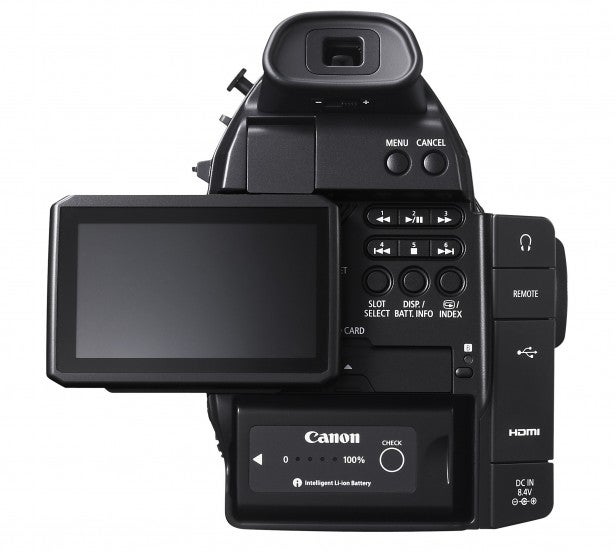Canon EOS C100 Review - Recording Formats, Creative Settings, Image Quality and Verdict Review
Recording Formats, Creative Settings, Image Quality and Verdict
The ultimate DSLR and video camera hybrid

Sections
- Page 1 Canon EOS C100 Review
- Page 2 Recording Formats, Creative Settings, Image Quality and Verdict Review
Canon EOS C100 – Recording Formats
The Canon C100 is the member of the Canon Cinema range primarily aimed at event and independent videographers, and so it shoots standard AVCHD. It has two SD Card slots, and you can either record to these simultaneously or relay between the two, so your recording will jump seamlessly from one to the other when the first card is full.
The Canon EOS C100 supports NTSC and PAL frame rates, giving you 60i, PF30, PF24, and 24p options for the former, and 50i and PF25 for the latter, although there are no 50p, 60p, or high-speed shooting options.
Data rates range from 7 to 24Mbits/sec, meaning you can record nearly six hours of footage on a 64GB memory card.
However, although the Canon EOS C100 is limited to shooting AVCHD in-camera – the more expensive C300 and C500 offer the higher-quality XF format and 4K resolution respectively – you can achieve better quality if you want via the HDMI port.
This outputs uncompressed video, which you can capture using a separate device like the Atomos Ninja-2. So this camcorder can offer true broadcast quality if required. It is possible to use a similar device with the HDMI port on the latest Canon EOS 5D Mark III and the most recent firmware, but you’re still confined by the DLSR’s audio limitations already mentioned and controls aimed at photography.
Canon EOS C100 – Creative Settings
The controls are another key area where the Canon EOS C100 wins out over a DSLR. All are numbered and can be assigned different functions if you want. Depending on the abilities of the lens you use, there is a one-touch autofocus available on the front.
There are buttons to enable manual iris, ISO/gain, and shutter, which you can then adjust with the joystick that is positioned precisely where your thumb sits when grasping the handgrip, making configuring settings very quick and user friendly.
There are also buttons for manual and preset white balance, and to toggle custom picture modes. These are colour profiles, with some preset ones included plus the ability to create them yourself.
The Canon EOS C100 also offers the Canon Log Gamma option, which shoots with a colour profile designed to obtain more information in highlights and shadows, for a wider dynamic range. This looks a bit washed out if left untreated, but provides ultimate editing flexibility when grading to get precisely the look you want, as it resolves the widest dynamic range – 800 per cent at ISO 850.
There are two buttons to zoom the 3.5-inch LCD so you can adjust focus more accurately, with one next to the joystick for maximum convenience. Peaking and zebra have their own discrete buttons, as does toggling the waveform view.
There’s a built-in wheel for adding Neutral Density filters, with options for 2, 4 and 6 stops, and these are actual physical filters rather than the electronic systems used on some camcorders.
Overall, the Canon EOS C100 is extremely user-friendly, with a great default selection of manual controls via discrete buttons, and loads of flexible customisation too. On the downside, you would need an extra attachment to use this camera comfortably, or in fact at all, on your shoulder.
Canon EOS C100 – Image Quality
The most impressive feature of the Canon EOS C100, however, is its image quality. The huge sensor provides an absolutely massive leap in sensitivity, and wipes the floor with traditional three-chip professional camcorders for similar money, or more. You have tremendous control over dynamic range, and the ability to vary depth of field can totally banish the ‘flat’ look of video. The picture clarity is incredible, with the most detail we have seen from any camcorder we have tested.
Particularly impressive are the low light abilities, which are enhanced by a fast lens like the one we were supplied with our review unit. If F/2.8 isn’t good enough for you, you can ramp the ISO all the way to 20,000, and add up to 30dB of video gain. This does introduce grain, but means you can shoot visible footage in almost complete darkness, where your own eyes are struggling to see, which is pretty incredible.
Verdict
Despite being the baby of the range, the Canon EOS Cinema C100 is still a pretty expensive camera, now that some professional options cost £2,000 or less. There has rightly been some consternation about this expressed via online forums. However, although you can pick some big-sensor options like Sony NEX-VG30, NEX-FS100 or the Panasonic AG-AF101A for less, none of these can match the visual quality or creative options of the C100.
It’s a pricey beast, but when you consider that the next step up, the C300, costs more than twice as much, and that you could shoot an independent film on this with footage that would be accepted by broadcasters, it’s a groundbreaking product.
Trusted Score
Score in detail
-
Design 10
-
Image Quality 10
-
Features 10
-
Value 8
-
Perfomance 10


